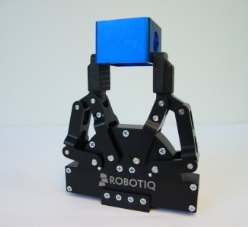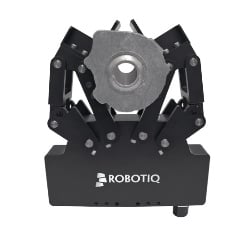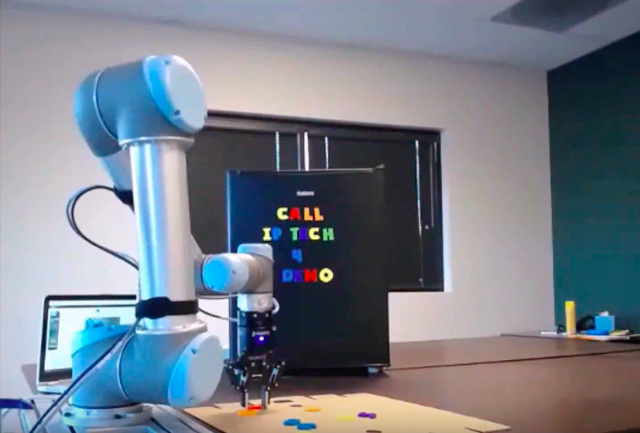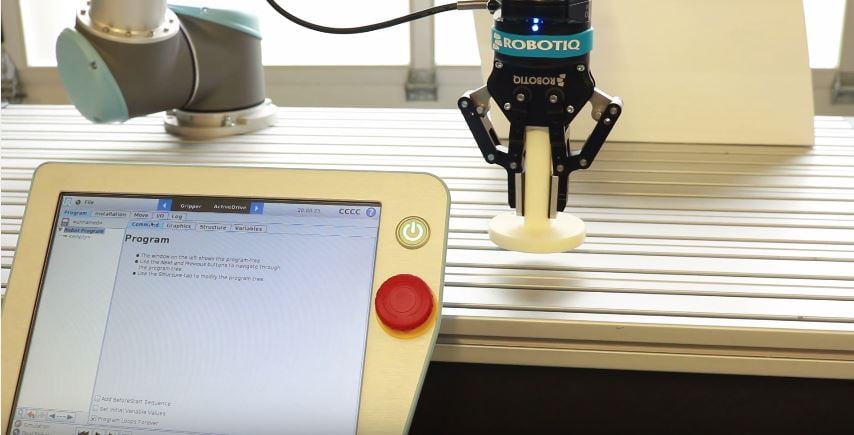What You Need to Know About Robot Grippers
Posted on Feb 26, 2013 2:23 PM. 4 min read time
 End-of-arm tooling (EOAT) decisions literally can make or break any robotic production process because the choices made affect productivity, profitability, and quality. This is why we have written this blog post to discuss these key factors in robotic gripper technology.
End-of-arm tooling (EOAT) decisions literally can make or break any robotic production process because the choices made affect productivity, profitability, and quality. This is why we have written this blog post to discuss these key factors in robotic gripper technology.
What is the difference between a multiple-use gripper and a custom, part-specific gripper?
A multiple-use robot gripper can be used to pick a wide range of parts with an adjustment of the stroke, force, and grip type. This becomes important when one robot has to pick a lot of different parts. In these situations, the robot processes several parts at one station (assembly, kitting) or processes only one part, but with frequent changeovers (machine load/unload).
The greatest benefit of a multiple-use, programmable electric gripper is that it reduces the changeover time to zero. You just need to load the program for the new part; there is no need to change tools.
A part-specific gripper is used when you need extreme mechanical repeatability and you can afford to pick a limited number of parts with it. It usually has limited stroke, control options, and custom-made fingers to match the part features.
How does gripper selection affect overall robot performance?
Just like the tire is the only thing between the car and the road, the gripper is what comes between the robot and its work. This means it can have a big impact on the overall performance of the robot. It can also have an important financial impact, if you consider the changeover time it can save and the flexibility it can bring when you add new products.
 How does gripper selection affect programming?
How does gripper selection affect programming?
Conventional robot grippers use discrete inputs and outputs. Servo grippers involve more programming because you can control more parameters and receive more feedback.
The good thing is that sometimes the feedback you get from the electric gripper replaces extra sensors you would have needed with conventional industrial robotic grippers, such as object detection sensors or a strain gauge.
How are thin-walled or delicate parts best held?
The force applied by the fingers is a programmable parameter. The motor current, which is proportional to the driving torque of the finger, is specified in the program. This is what enables the robot gripper to hold delicate parts gently.
Is proper contact between the gripper and the part important, and how is it accomplished?
It is always necessary to hold the part reliably and safely. This is done through proper gripper design and proper robot programming. Electric grippers usually return information on part contact to the program.
proper robot programming. Electric grippers usually return information on part contact to the program.
Then the gripper is able to determine when it has gripped an object. This is useful to determine if the pickup procedure was performed correctly and if the robot can move to the next step of its programming. In some cases, however, it is also useful to verify if the gripper still has the object after the robot executes a motion.
What type of feedback can the electric gripper supply, and how can this information be used?
Encoder position, motor current, and part detection are all types of feedback that the gripper returns to the controller. This information can be used to make sure the gripper has the right part and even to make sure a part is there at all.
How should gripper maintenance be performed?
The gripper, like the rest of the cell, should be inspected periodically to detect potential maintenance issues. Improper maintenance can affect downtime and have a major financial impact.
What are the differences in design and functionality of Robotiq industrial robot grippers?
All our robot grippers have self-adaptive fingers that can adapt automatically to different shapes. They are all electric grippers with controllable finger position, speed, and force. They also are used in high-mix applications such as assembly and kitting, as well as machine load/unload.
The 3-Finger Adaptive Gripper is an industrial robot hand that can pick a wider range of parts. It has four motors, and each finger can be controlled individually. The controller also is  embedded. Each finger has three phalanxes so more contact points can distribute the pressure on fragile parts.
embedded. Each finger has three phalanxes so more contact points can distribute the pressure on fragile parts.
We also have 2 models of the 2-Finger Robot Gripper. The 2-Finger Adaptive Gripper - 85 is the smaller one which is designed to do light assembly, part sorting, kitting, bin picking and part transfer. The 2-Finger Adaptive Gripper - 200 has been designed to handle parts up to 40 lbs and work in dusty and unfriendly environments for robots. Both 2-Finger robot grippers have external controllers and are driven by one motor that moves the two fingers simultaneously. So it is self-centering for symmetric parts.








Leave a comment